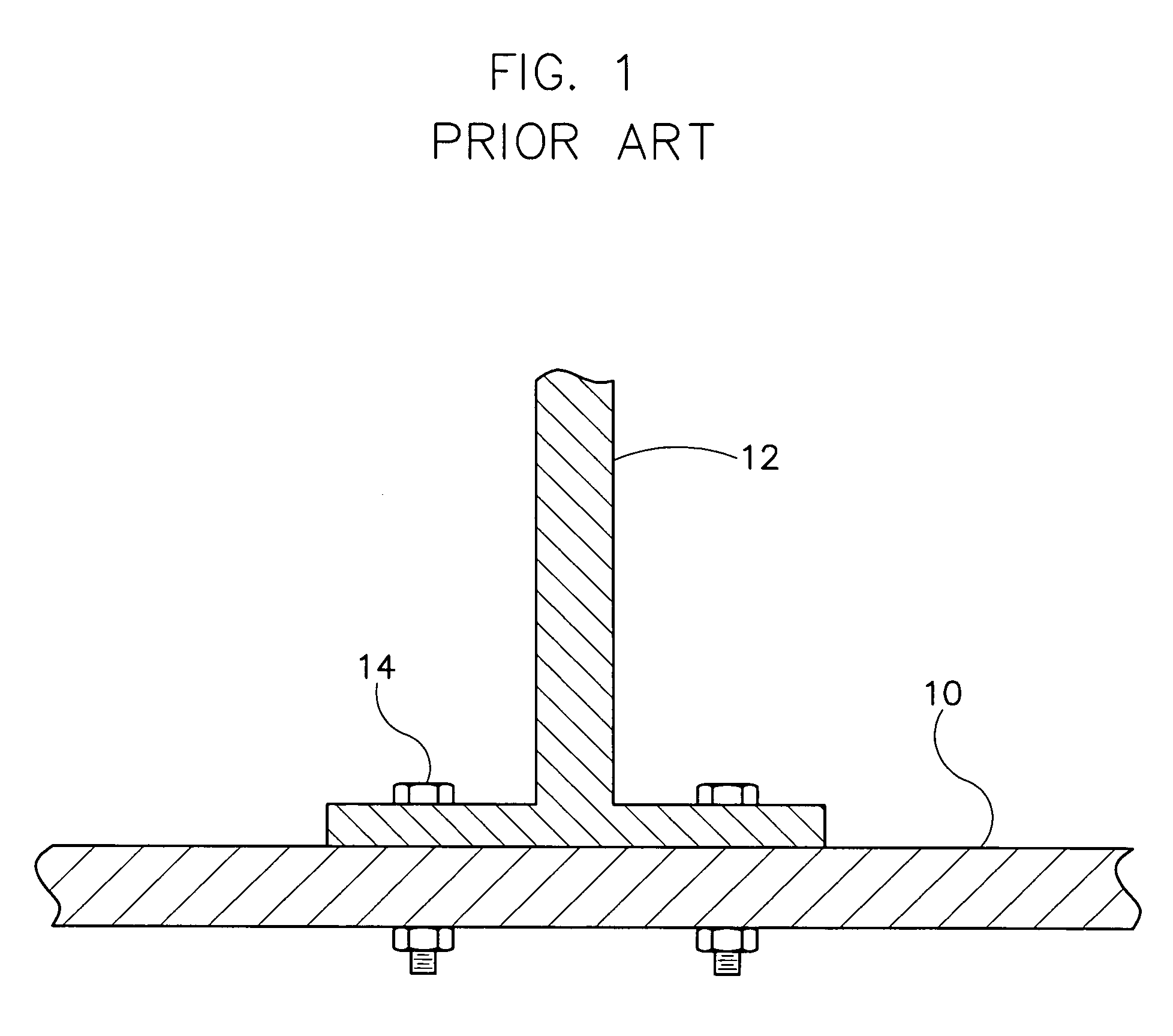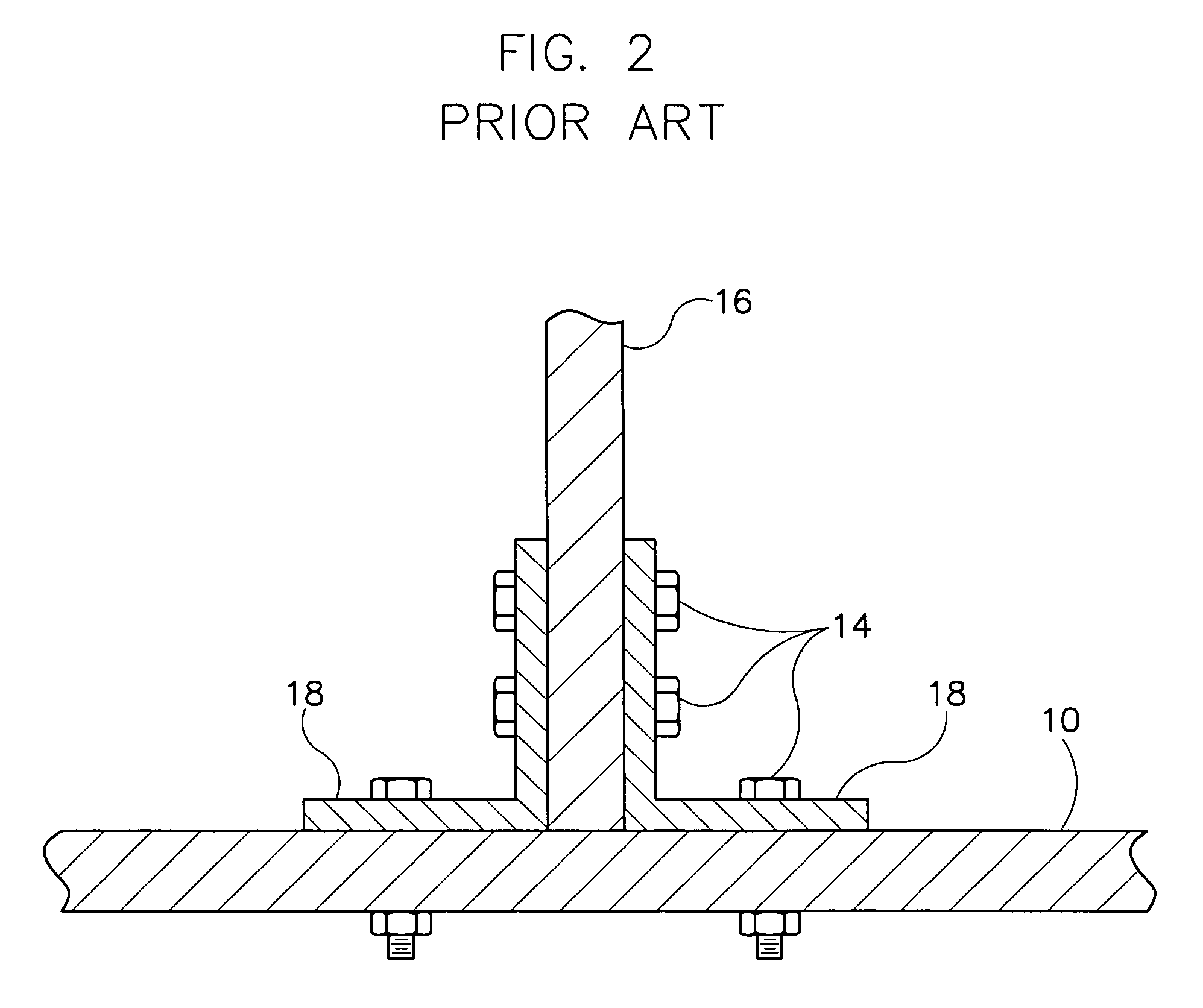Methods of joining structures and joints formed thereby
a technology of joining structure and joint, applied in the field of joining structure, can solve the problems of difference in materials required to form the joint, the weight of adhesion bonded joints is not necessarily lighter,
- Summary
- Abstract
- Description
- Claims
- Application Information
AI Technical Summary
Benefits of technology
Problems solved by technology
Method used
Image
Examples
Embodiment Construction
[0020]The present invention relates to a method of joining two or more structures, and more particularly to a method of joining two structures using an adhesively bonded joint having a cavity that is substantially free of adhesive. Referring now to the figures, and more particularly to FIG. 4, a joint according to a first embodiment of the present invention is designated in its entirety by reference number 50. The joint 50 connects a first structure 52 to a second structure 54 using a joint element 56 and an adhesive 58. The second structure 54 has faces 60 and a lower surface 62. The joint element 56 has a base 64 and two legs 66 extending from the base. The legs 66 define a slot 68 having opposing sides 70 and a bottom 72.
[0021]The bottom 72 of the slot 68, the sides 70 of the slot, the adhesive 58, and the lower surface 62 of the second structure 54 define a cavity 74 that is substantially free of adhesive 58. The cavity 74 can be kept free of adhesive 58 in a variety of ways. Th...
PUM
| Property | Measurement | Unit |
|---|---|---|
| electrically conductive | aaaaa | aaaaa |
| modulus of elasticity | aaaaa | aaaaa |
| flexible | aaaaa | aaaaa |
Abstract
Description
Claims
Application Information
 Login to View More
Login to View More - R&D
- Intellectual Property
- Life Sciences
- Materials
- Tech Scout
- Unparalleled Data Quality
- Higher Quality Content
- 60% Fewer Hallucinations
Browse by: Latest US Patents, China's latest patents, Technical Efficacy Thesaurus, Application Domain, Technology Topic, Popular Technical Reports.
© 2025 PatSnap. All rights reserved.Legal|Privacy policy|Modern Slavery Act Transparency Statement|Sitemap|About US| Contact US: help@patsnap.com



